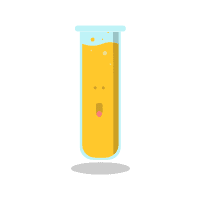
NCSCOS Grade 8 Physical Science - 8.P.1 Diagnostic Matter
Quiz by NCDPI
Grade 8
Science
North Carolina Standard Course of Study
Feel free to use or edit a copy
includes Teacher and Student dashboards
Measures 4 skills from
Measures 4 skills from
With a free account, teachers can
- edit the questions
- save a copy for later
- start a class game
- automatically assign follow-up activities based on students’ scores
- assign as homework
- share a link with colleagues
- print as a bubble sheet
10 questions
Show answers
- Q1In a solution, the parts of the solution are mixedchemicallyphysicallyonly in waterby electronic means30s8.P.1.1
- Q2Using the diagram, what is true about matter as it changes states?As matter moves from gas to solid, it gains atoms as they multiply.As matter moves from liquid to solid, atoms spread outAs matter moves from solid to gas, atoms slow down and compact.As matter moves from solid to gas, atoms speed up and spread out.30s8.P.1.1
- Q3All of the statements are true about the arrangement of elements in the periodic table EXCEPT that therare earth elements are in the first column, on the left.transition metals are in the center of the periodic table.inert gases are in the group farthest to the right.metals are found on the left side of the periodic table.30s8.P.1.2
- Q4A column on the periodic table is called aseriedperiodsetgroup30s8.P.1.2
- Q5How are the elements in the periodic table arranged?by increasing atomic numberalphabeticallysolid to liquid to gasby the year they were discovered30s8.P.1.2
- Q6In your lab group you combined vinegar and water and observed the results shown in the picture. Choose the evidence that supports that a chemical change has occurred.The color changed.The baking soda dissolved.The size changedBubbling occurred.30s8.P.1.3
- Q7What is the difference between a chemical and a physical change?A chemical change does not change the arrangement of atoms and a physical change DOES change the arrangement of atoms.During a chemical change, the substance stays the same.A chemical change does not produce a new substance, and a physical change DOES produce a new substanceA chemical change is irreversible and a physical change is reversible30s8.P.1.3
- Q8What must be true for a chemical equation to be balanced?All the molecules are broken downThe exact same number of atoms of each element are on each side of the equation.All the same elements are present on each side of the equationThe same total number of atoms must be the same, it doesn't matter which element they are30s8.P.1.4
- Q9In this picture, which box on the right is correct according to the Law of Conservation of Mass?ACBD30s8.P.1.4
- Q10What is the difference between an element and a compound?A compound can be found on the periodic table, an element is not found there.A compound is represented by a single letter, an element is two or more different lettersElement is a pure substance of only one kind of atom, a compound is two or more different elements bonded togetherCompound is a pure substance of only one kind of atom, an element is two of mor different compounds bonded together30s8.P.1.2